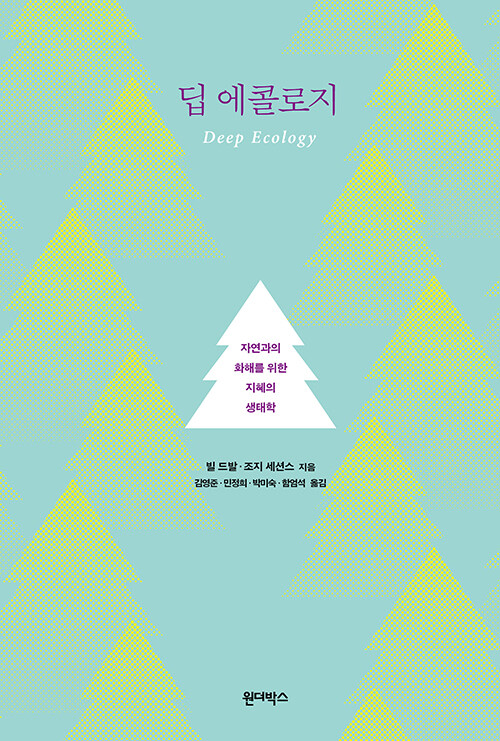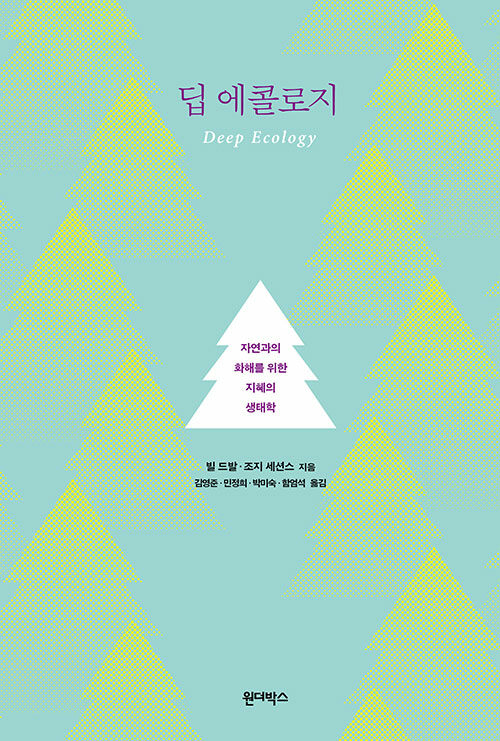Toshihiko Izutsu
Sufism And Taoism
Comparative Study of Key Philosophical Concepts
"Professor Izutsu's work is a pioneering attempt to bring into focus the
shareable philosophical concerns of two seemingly unrelated landmarks
in religious thought. His method is suggestive, interpretation new and
bold, and material used important for further research. His book is
useful to students of comparative religion, philosophy of religion, cul-
tural anthropology, Asian thought and religion, and Islamic and Taoist
studies."
Comparative Study of Key Philosophical Concepts
"Professor Izutsu's work is a pioneering attempt to bring into focus the
shareable philosophical concerns of two seemingly unrelated landmarks
in religious thought. His method is suggestive, interpretation new and
bold, and material used important for further research. His book is
useful to students of comparative religion, philosophy of religion, cul-
tural anthropology, Asian thought and religion, and Islamic and Taoist
studies."
— Tu Wei-ming
"[This book] carries out a comparison in depth between Islamic and
Chinese thought for the first time in modern scholarship. . . .Since this
book appeared it has influenced every work on Ibn Arab! and meta-
physical Sufism . . . [and] any cursory study of Sufism during the last
fifteen years will reveal the extent of Izutsu's influence.
— Seyyed Hossein Nasr
SUFISM AND TAOISM:
"[This book] carries out a comparison in depth between Islamic and
Chinese thought for the first time in modern scholarship. . . .Since this
book appeared it has influenced every work on Ibn Arab! and meta-
physical Sufism . . . [and] any cursory study of Sufism during the last
fifteen years will reveal the extent of Izutsu's influence.
— Seyyed Hossein Nasr
SUFISM AND TAOISM:
A Comparative Study of Key Philosophical Concepts
by Toshihiko Izutsu 1983
First published 1983 by Iwanami Shoten, Publishers, Tokyo
This edition is published by The University of California Press, 1984,
Rev. ed. of: A comparative study of the key philosophical concepts in Sufism and Taoism. 1966-67.
=====
by Toshihiko Izutsu 1983
First published 1983 by Iwanami Shoten, Publishers, Tokyo
This edition is published by The University of California Press, 1984,
Rev. ed. of: A comparative study of the key philosophical concepts in Sufism and Taoism. 1966-67.
=====
Contents
Preface by T. Izutsu
Introduction
Part I - Ibn 'Arabi
1 Dream and Reality
II The Absolute in its Absoluteness
III The Self-knowledge of Man
IV Metaphysical Unification and Phenomenal Dispersion
V Metaphysical Perplexity
VI The Shadow of the Absolute
VII The Divine Nam es
VIII Allah and the Lord
IX Ontological Mercy
X The Water of Life
XI The Self-manifestation of the Absolute
XII Permanent Archetypes
XIII Creation
XIV Man as Microcosm
XV The Perfect Man as an Individual
XVI Apostle, Prophet, and Saint
XVII The Magical Power of the Perfect Man
Part II - Lao-Tzii & Chuang-Tzu
I Lao-Tzu and Chuang-Tzu
II From Mythopoiesis to Metaphysics
III Dream and Reality
IV Beyond This and That
V The Birth of a New Ego
VI Against Essentialism
VII The Way
VIII The Gateway of Myriad Wonders
IX Determinism and Freedom
X Absolute Reversai of Values
XI The Perfect Man
XII Homo Politicus
Part III - A Comparative Reftection
I Methodological Preliminaries
II The Inner Transformation of Man
III The Multistratified Structure of Reality
IV Essence and Existence
V The Self-evolvement of Existence
===
Preface
This is originally a book which I wrote more than fifteen years ago,
when I was teaching Islamic philosophy at the Institute of Islamic
Studies, McGill University, Montreal, Canada.
At that time I was becoming conscious of myself gradually getting
into a new phase of my intellectual life, groping my way towards a
new type of Oriental philosophy based on a series of rigorously
philological, comparative studies of the key terms of various
philosophical traditions in the Near, Middle, and Far East. The
present work was the very first product of my endeavour in this
direction.
The book was subsequently published in Japan in two separate
volumes in 1966-1967, under the title A Comparative Study of Key
Philosophical Concepts in Sufism and Taoism (with the subtitle 'Ibn
'Arabi and Lao-tzu - Chuang-tzu') as a publication of the Institute
of Cultural and Linguistic Studies, Keio University, Tokyo, under
the directorship of the late Professor Nobuhiro Matsumoto.
A growing demand for a new, revised edition made me decide to
republish the book while I was in Iran. Printed in England, it had
been scheduled to come out in Tehran towards the end of the year
1978, when the sudden outbreak of the Khomeini 'revolution'
rendered its publication impossible. Thus it was that, by a strange
working of fate, the book - completely revised, but still in the form
of galley proofs - came back with its author once again to Japan, the
place where it had first seen the light of day.
In the process of revising the book in its entirety, I did my best to
eliminate ail the defects and imperfections that had come to my
notice in the meantime. But, of course, there are natural limits to
such work of correction and amendment.
I only hope that this old book of mine in a new form, despite many
mistakes and shortcomings that must still be there, might at least
make a modest contribution towards the development of 'meta-
historical dialogues' among representatives of the various
philosophical traditions in the East and West, a special kind of
philosophical dialogue of which the world today seems to be in
urgent need.
lt is my pleasant duty to express my deep gratitude to the Iwanami
Shoten, Publishers, for having undertaken the publication of this
book. My thanks go in particular to Mr Atsushi Aiba (of the same
publishing bouse) who has spared no effort in smoothing the way for
the realization of this project. 1 take this occasion to thank also the
authorities of my alma mater, Keio University, from whom, as 1
recall now, 1 derived inestimable encouragement while 1 was
engaged in writing this book in its original form.
T.Izutsu
October 4, 1981
Kamakura, Japan
===
Introduction
As indicated by the title and the subtitle, the main purpose of the
present work in its entirety is to attempt
- a structural comparison between the world-view of Sufism as represented by Ibn' Arabi and
- the world-view of Taoism as represented by Lao-tzu and Chuang-tzu.
I am aware of the fact that this kind of study has a number of
pitfalls. A comparison made in a casual way between two thought-
systems which have no historical connection may become superfi-
cial observations of resemblances and differences lacking in
scientific rigor. In order to avoid falling into this error, an effort will
· be made to lay bare the fundamental structure of each of the two
world-views independently and as rigorously as possible before
proceeding to any comparative considerations.
With this in view, the First Part will be entirely devoted to an
attempt at isolating and analyzing the major ontological concepts
which underlie the philosophical world-view of Ibn 'Arabi, while in
the second part exactly the same kind of analytic study will be made
concerning the world-view of Lao-tzu and Chuang-tzu, in such a way
that both parts may constitute two entirely independent studies, one
of Ibn' Arabi and the other of ancient Taoism.
Only in the third part
will an attempt be made to compare, and co-ordinate, the key-
concepts of these two world-views which have been previously
analyzed without any regard to similarities and differences between
them.
However this may be, the dominant motive running through the
entire work is the desire to open a new vista in the domain of
comparative philosophy and mysticism. A good starting point for
such a comparison is provided by the fact that both world-views are
based on two pivots, the Absolute and the Perfect Man, 1 a whole
system of ontological thought being developed in each case between
these two poles.
It is to be noted that as an ontological structure this is nothing
peculiar to Sufism and Taoism. The opposition of the Absolute and
the Perfect Man in various forms as the two pivots of a world-view is
a basic pattern common to many types of mysticism that have
developed in the world in widely different places and ages. And a
comparative consideration of a number of systems sharing the same
broad pattern and differing from each other in details both of origin
and historical circumstance would seem to prove very fruitful in
preparing the ground for that which Professor Henry Corbin has
aptly called 'un dialogue dans la métahistoire', meta-historical or
transhistorical dialogue, ['a dialogue in metahistory', meta-historical or transhistorical dialogue,] and which is so urgently needed in the
present situation of the world.
Referring to the fact that Ibn 'Arabi has evoked so much discus-
sion and controversy, unprecedented in the history of Islamic
thought, and attributing this fact to the nature of Islam itself which
combines two Truths: IJ,aqïqah 'the truth based on Intellection' and
sharï'ah 'the truth based on Revelation', Dr Osman Yahya makes
the following interesting remark2 :
le cas d'Ibn 'Arabi ne se poserait
pas avec autant d'acuité dans une tradition de pure métaphysique
comme le taoism ou le védanta où la personalité du Maître ... eut
pu s'épanouir librement, ni non plus dans une tradition de pure loi
positive où son cas n'eut même pas pu être posé puisqu'il eut été
refusé par la communauté tout entière, irrémédiablement. Mais le
destin a voulu placer Ibn 'Arabi à la croisée des chemins pour
dégager, en sa personne, la véritable vocation de l'Islam.
[the case of Ibn 'Arabi would not arise with such acuity in a tradition of pure metaphysics like Taoism or Vedanta where the personality of the Master ... could have blossomed freely,
nor in a tradition of pure positive law where his case could not even have been posed since it would have been irremediably refused by the entire community.
But fate wanted to place Ibn 'Arabi at a crossroads to bring out, in his person, the true vocation of Islam.]
There can be no _denying that Lao-tzü's metaphysics of Tao
presents in its abysmal depth of thought a number of striking
similarities to Ibn' Arabï's conception of Being. This is the more
interesting because, as 1 shall indicate in the Second Part, Lao-tzü
and represent a culmination point of a spiritual tradition
which 's historically quite different from Sufism.
We must as I have remarked above, guard ourselves against
making too easy comparisons, but we must also admit, I believe,
that a comparative study of this kind, if conducted carefully, will at
least furnish us with a common ground upon which an intercultural
dialogue may fruitfully be opened.
In accordance with the general plan above outlined, the first half
of the present book will be concerned exclusively with an analytic
study of the key-concepts which constitute the ontological basis of
Ibn 'Arabï's world-view. This world-view, as 1 have said, turns
round two pivots, the Absolute and the Perfect Man, in the form of
an ontological Descent and Ascent. In describing this cosmic pro-
cess Ibn 'Arabi develops at every stage a number of concepts of
decisive importance.
It is these concepts that the present work
intends to analyze. It purports to analyze methodically the ontologi-
cal aspect of Ibn 'Arabï's mystical philosophy regarding it as a
system of key-concepts that relate to 'being' and existence'.
Ontology, we must admit, is but one aspect of the thought of this
extraordinary man. It has other no less important aspects such as
psychology, epistemology, symbolism, etc., which, together, consti-
tute an original and profound world-view.
But the concept of Being, as we shall see, is the very basis of his philosophical thinking, and his theory of Being is doubtless of such originality and of such a far-
reaching historical importance that it calls for separate treatment.
At the very outset 1 would like to make it clear that this is not a
philologically exhaustive study of Ibn 'Arabi. On the contrary, the
present study is based, as far as concerns Ibn' Arabi himself, almost
exclusively on only one of his works: 'The Bezels of Wisdom' or
al-lf ikam. It is essentially an analysis of the major ontological
concepts which Ibn' Arabi develops in this celebrated book that has
often been described as his opus magnum, and has been studied and
commented upon by so many people throughout the centuries.3 So
on the material side, the present work does not daim to offer
anything new.
From the beginning it was not my intention to be exhaustive. My
intention was rather to penetrate the 'life-breath' itself, the vivify-
ing spirit and the very existential source of the philosophizing drive
of this great thinker, and to pursue from that depth the formation of
the whole ontological system step by step as he himself develops it.
In order to understand the thought of a man like Ibn 'Arabi, one
must grasp the very spirit which pervades and vivifies the whole
structure; otherwise everything will be lost. All considerations from
outside are sure to go wide of the mark. Even on an intellectual and
philosophical level, one must try to understand the thought from
inside and reconstruct it in one's self by what might be called an
existential empathy. For such a purpose, to be exhaustive, though of
course desirable, is not the first requirement.
Ibn 'Arabi was not merely a profound thinker; he was an unusu-
ally prolific writer, too. The authorities differ among themselves on
the exact number. Al-Sha'râni, to give an example, notes that the
Master wrote about 400 works.4 The répertoire général of the
above-mentioned bibliographical work by Dr Osman Yahya lists as
many as 856 works, although the number includes doubtful works
and those that are evidently spurious.
In a situation like this, and for purposes like ours, it is not only
irrelevant but, even more, positively dangerous to try to note every-
thing the author has said and written on each subject over a period
of many years, For one might easily drown oneself in the vast ocean
of concepts, images and symbols that are scattered about in utter
disorder throughout the hundreds of his works, and lose sight of the
main line or lines of thought and the guiding spirit that underlies
the whole structure. For the purpose of isolating the latter from the
disorderly (as it looks at first sight) mass of symbols and images, it
will be more wise and perhaps, more profitable to concentrate on a
work in which he presents bis thought in its maturest form. 5
In any case, the present work consists exclusively of an analysis of
the 'Bezels of Wisdom' except in a few places where 1 shall refer to
one of bis smaller works for elucidation of some of the important
points. 6 As remarked above, FWiW/ al-lfikam bas been studied in
the past by many people in many different forms. And yet 1 hope
that my own analysis of the same book bas something to contribute
toward a better understanding of the great Master who bas been
considered by many people one of the profoundest, but at the same
time, obscurest thinkers Islam bas ever produced.
Notes
1. In Ibn 'Arabi's system, the Absolute is called haqq (Truth or Reality) and the
Perfect Man is called insân kâmil meaning literally 'perfect man'.
In Taoism, the Absolute is tao and the Perfect Man is shêng jên (성인 Sacred Man or Saint), chên jên (전인 True Man), etc. 1 have dealt with the relationship between the Absolute and the Perfect Man in Taoism in particular in my Eranos lecture for 1967: 'The Absolute and the Perfect Man in Taoism', Eranos-Jahrbuch, XXXVI, Zürich, 1968.
2. Histoire et classification de /' œuvre d' Ibn 'Arabi, 2 vols. 1964, Damas, avant-
propos, pp. 18-19.
3. Dr Osman Yahya lists more than 100 commentaries on al-}fikam, cf. op.
cit., 1, p. 17, pp. 241-257.
4. al-Sha'râni, al-Yawâqït wa-al-Jawâhir, Cairo, 1305 A.H., vol. 1., p. 10.
5. Ibn 'Arabi (born in Spain in 1165 A.D.) died in Damascus in al-lfikam was written in 1229, ten years before his death. As regards his life ancNtis
works the best introduction, to my knowledge, is found in Seyyed Hossein Nasr's
Three Muslim Sages, Cambridge, Mass., 1964, pp. 84-121.
6. As a concrete illustration of the oft-repeated attempt at bringing philosophical
coherence and order into the world-view of the Master, 1 shall in most cases give
al-Qâshâni's comments side by side with Ibn 'Arabi's words. 'Abd al-Razzâq al-
Qâshâni ( d. 1330) is one of the greatest figures in the school of Ibn 'Arabi. The
edition used in the present book is Sharh al-Qâshânï 'alà al-/:likam, Cairo,
1321 A.H. For the interpretation of difficult passages of the text 1 have also used
and Jâmi.









